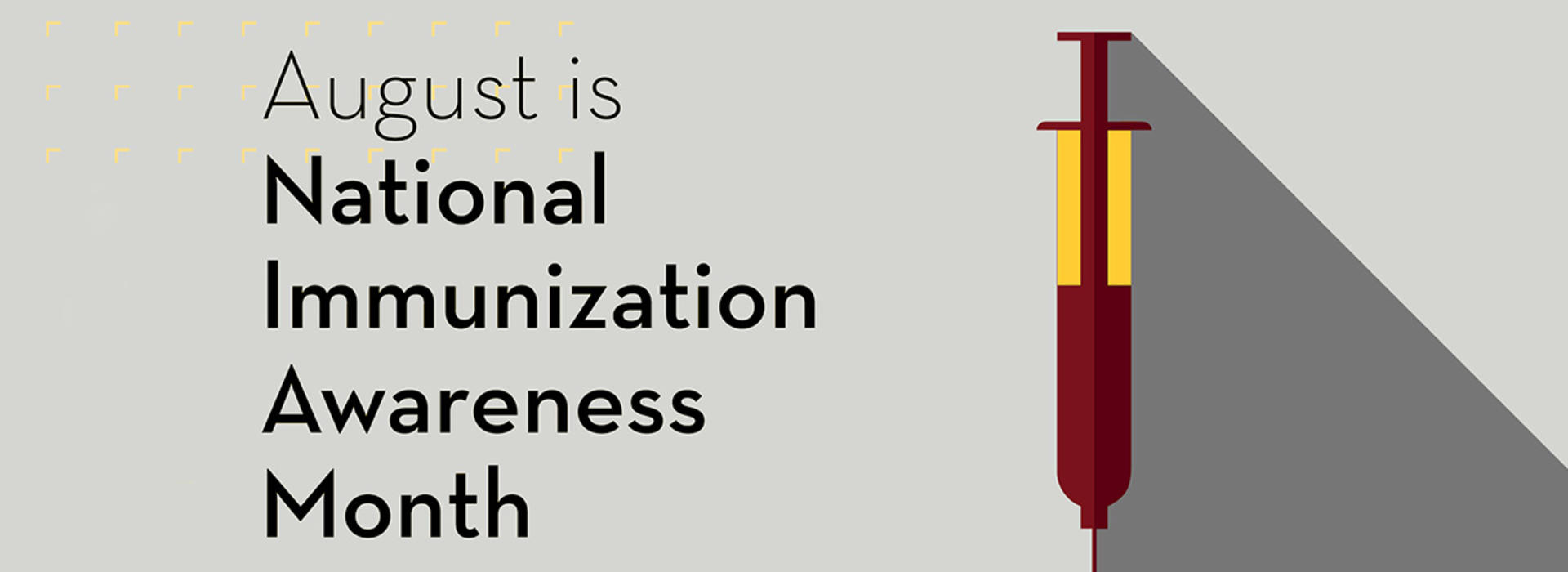
Moving the Needle
The Minnesota Department of Health has identified an outbreak of hepatitis A in Minnesota. The virus is often passed directly through contaminated food and water and is currently clustered in certain at-risk populations in the state, affecting more than 20 people across nine counties. University of Minnesota Medical School experts say prevention is easy.
“The vaccine for hepatitis A is very safe and highly effective. It’s one of the best vaccines available today,” said Tyler Bold, MD, PhD, Assistant Professor of Medicine, Division of Infectious Diseases and International Medicine at the University of Minnesota Medical School. According to the Centers for Disease Control, the vaccine has an efficacy of 94% or higher after two doses. If a family has received regular pediatric care and has followed the recommended vaccination series, the risk is very low.
Keeping up with vaccines
August is National Immunization Awareness Month, which is held every year to highlight the importance of vaccination for people of all ages.
“I’m inspired by the potential of immunology and vaccines to transform people’s lives,” said Bold.
Several major diseases are preventable because of vaccines including polio, diphtheria, tetanus, pertussis, measles, mumps, rubella, and certain forms of bacterial pneumonia and meningitis.
“Humanity extended average lifespan significantly during the 20th century. Part of that was clean water as well as vaccines and antibiotics. Now- antibiotic resistance has emerged,” said David Masopust, PhD, Professor, Department of Microbiology and Immunology at the University of Minnesota.
“This current environment of resistance to vaccination we are witnessing exists in this period of short term memory where the real triumphs of vaccination have been forgotten to some degree,” said Marc Jenkins, PhD, Regents and Distinguished McKnight University Professor, Department of Microbiology and Immunology at the University of Minnesota Medical School.
A dangerous trend
There are an estimated 20 million cases of measles and 197,000 deaths from measles each year worldwide. According to the Centers for Disease Control and Prevention, almost all reported cases of measles in the U.S. are in people who are unvaccinated.
“From the standpoint of someone who studies infectious diseases, it's important for people to realize how much of a threat even a few cases of measles can represent. While it might not seem that big a deal for a community or society—I can assure you it is. Measles is one of the most contagious pathogens we know,” said Bold.
When Bold was training for his current role as an infectious disease specialist with University of Minnesota Health, he and his fellow medical students thought that, as physicians, they’d probably never see a case of measles in the United States. “It’s a huge change in where we are with this disease. Around the turn of the century, in the early 2000s, we were just declaring measles eradicated in this country. And now we are seeing cases regularly,” said Bold.
Moving the needle
Research and work to develop new vaccines continues, and the University of Minnesota is leading the charge.
“There’s a lot of basic research going on here at the U to just try to understand the basic principles of immunity, said Jenkins. “By understanding those principles, we hope to make better vaccines. This is really the strength of the Center for Immunology at the University of Minnesota.”
Physician-scientists like Bold are also working to create vaccines for the many diseases for which there still are no effective vaccines, such as HIV, malaria, and Tuberculosis.
“Tuberculosis is the number one infectious cause of death in the world. A big part of that is we have no effective vaccine,” said Bold. “There are effective antibiotics, but they are hard to administer and take months to work. On the other hand, a good vaccine could prevent the infection from ever happening in the first place. The best ones can be given once or twice in childhood, and that protection should last for the rest of the person's life.”
Game changer
HIV essentially didn’t exist 40 years ago- it is an infectious disease that only recently emerged.
“Alarmingly, more and more infectious diseases are emerging or providing indications that they could be global threats, so there could be something far worse around the corner,” said Masopust. “I think science will be our salvation. That’s why you have dedicated people working to stay ahead of the game.” People like Masopust himself.
Masopust and his team are currently working on an HIV vaccine and have made a discovery in primate models that could be a ‘game changer’ in regards to how people think about the HIV vaccine.
Currently, most of the efforts in HIV vaccinology focus on one area of the immune system. Masopust and his team focused on the other and found that if you bring both “arms” of the immune system together that efficacy is much better.
“Something like HIV is very variable and so it’s very difficult to generate a humoral vaccine that would be relevant to all the circulating HIVs in the world- and if its not, or at least to many, then it won’t be clinically relevant,” said Masopust. “But people are now changing the way they are thinking. Hopefully this finding - even though it is only in primates at this point - awakens people that two arms of the immune system is better than one.”